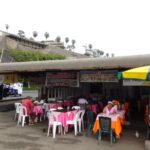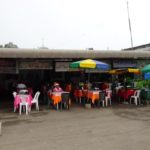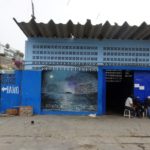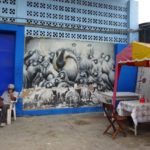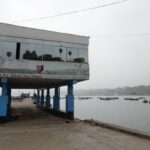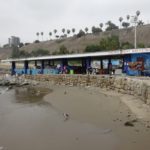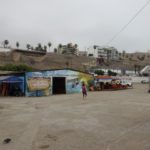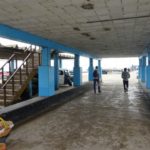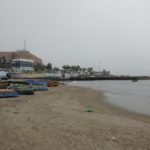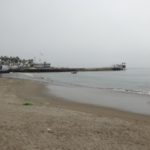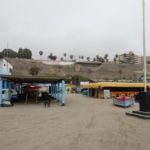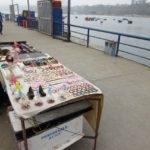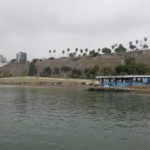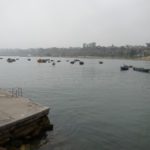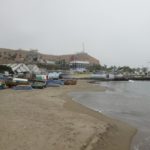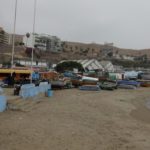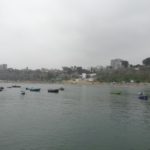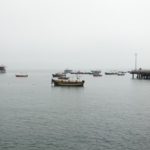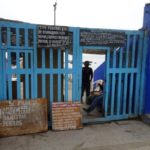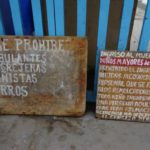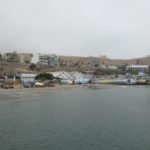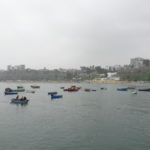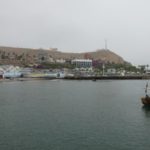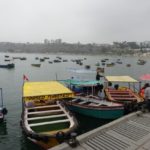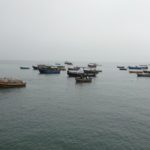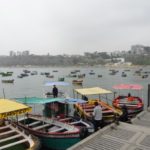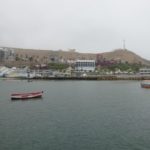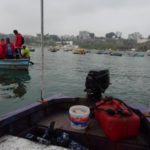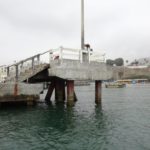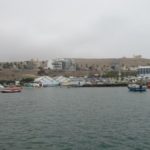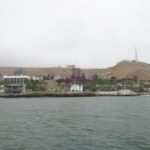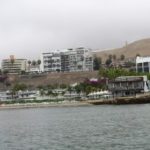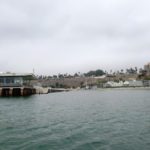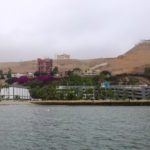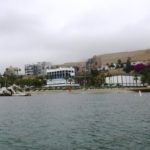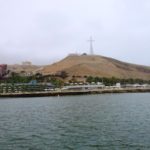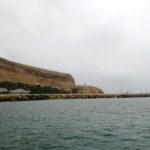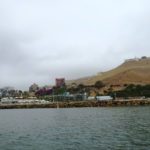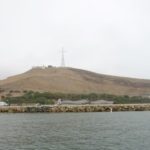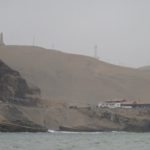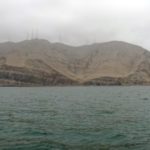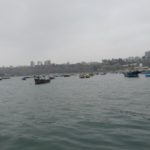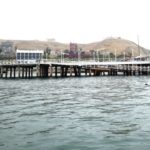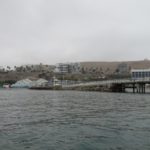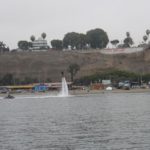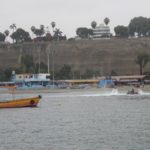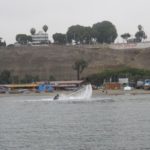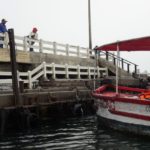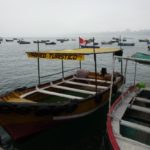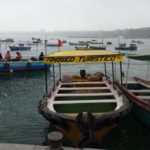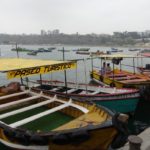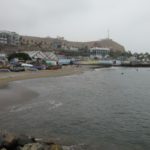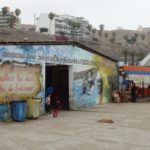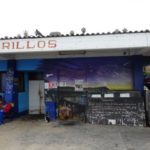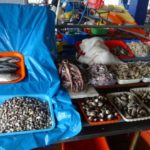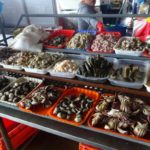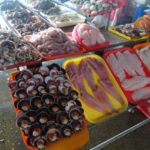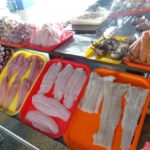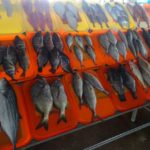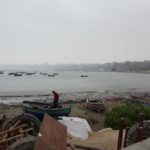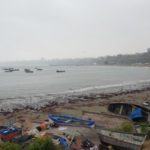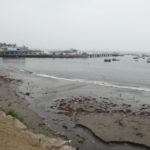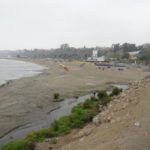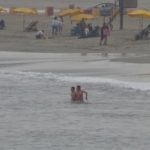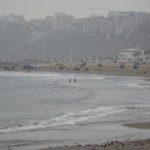The Chorrillos Fisherman’s Wharf is a dock for small-scale fishing and guided boat tours of the coastline. The fish market vendors sell dozens of different kinds of fresh fish and seafood.
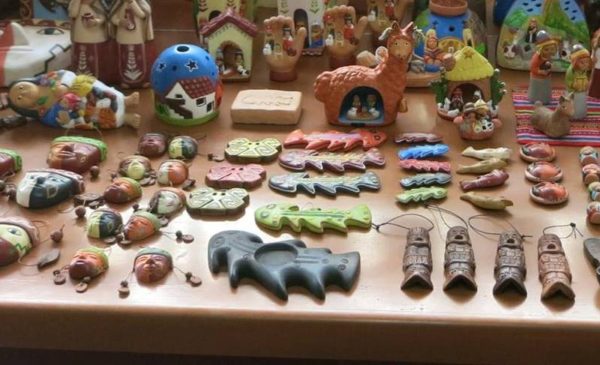
The abundant fish in the Pacific Ocean were the primary factor in making Peru a cradle of civilization in the Americas. A few hours north of the city, Caral-Supe is the oldest known civilization in the Americas. The art from the indigenous cultures of Lima, seen at Huaca Pucllana or Pachacamac for example, illustrates how important fish was to the local diet.
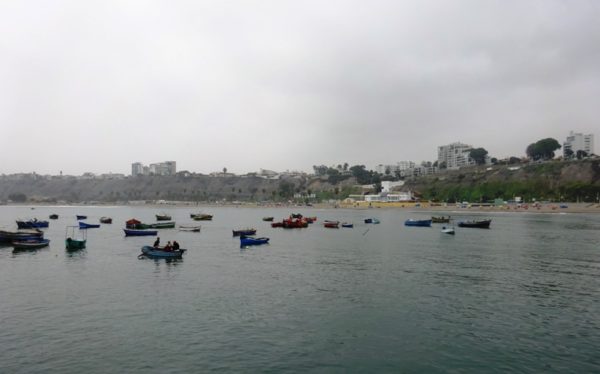
Chorrillos is one of Lima’s top fishing centers. Dozens of skiffs float in the harbor on any given day.
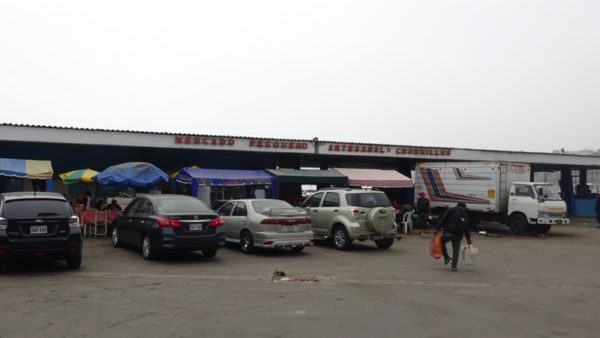
The wharf doesn’t look like much from outside. But don’t worry, you’re in the right place. The good stuff is inside. There are a dozen or so ceviche and fish restaurants whose staff will beckon you in for lunch. The food is great at all these places, but I must regretfully recommend that short-term visitors whose digestive systems haven’t adapted to Peru PASS on these in favor of more formal establishments.
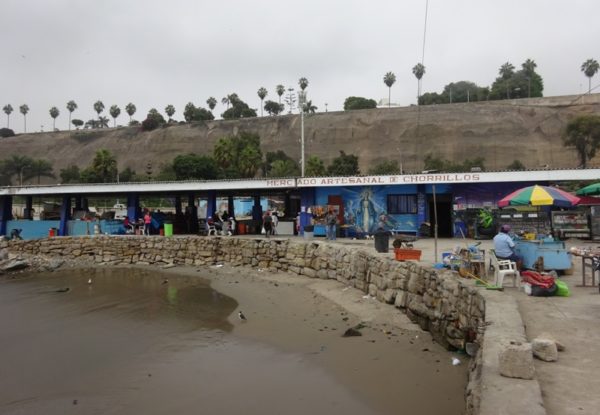
This is the fish market viewed from the pier. The vendors’ stalls are on the left.
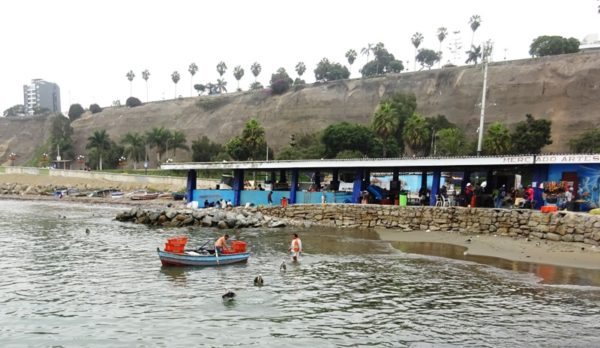
A trip to the wharf will see Lima’s fisherman plying a trade that has been practiced in the area for thousands of years. I watched one of those pelicans snatch a fish from one of these guys’ crates. I can’t imagine the restraint required to work alongside those birds without going on the attack!
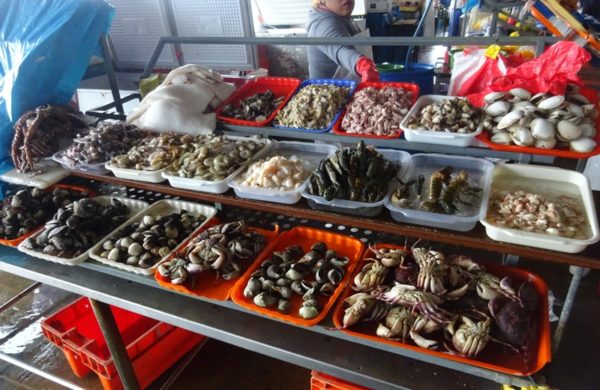
Inside the fish market you’ll find amazing displays of all of Lima’s marine life worth selling as food, fish that swim whole or fileted and critters that crawl or slither at the bottom of the sea. See the obvious stuff like shrimp and crab, but also note the purple octopus on the upper left.
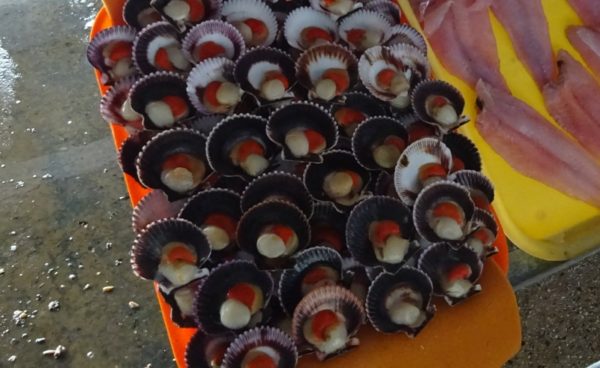
Looking to cook something? The easiest Peruvian delicacy are conchas parmesanas. Buy a dozen or two of these guys and coat the meat in butter and parmesan, then broil and serve with lime.

It costs a whopping 50 centimos to access the wharf and where the boats dock.
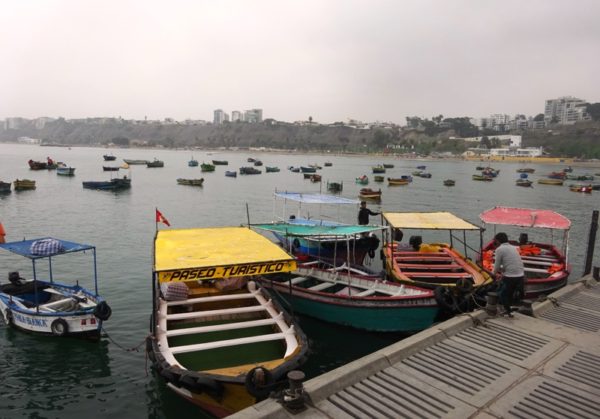
Tour guides offer to take you on their motorized skiffs to see La Herradura beach and more. If you’re pressed for time, tell the guide how long you can be out there and he’ll cut you a deal. Or if you want to go deeper, they can schedule fishing expeditions of up to five hours. The places they take you are so teeming with fish that they guarantee a catch within an hour. It may not be anything worth selling, but you’ll catch something.
Again, fishing and naval culture is the raison d’etre for Lima, the most important aspect of its history. If you don’t take a boat tour at La Punta del Callao, make sure you do in Chorrillos.
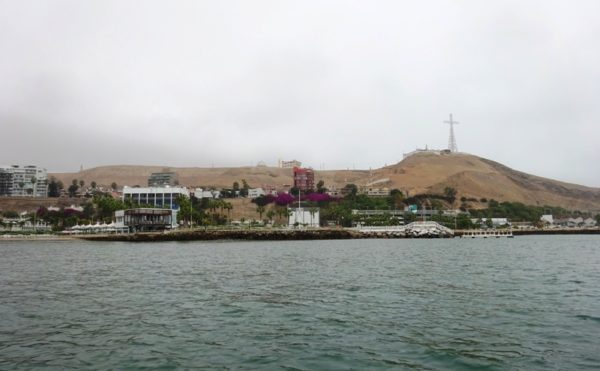
Any boat tour will take you south to the Herradura beach, passing by the exclusive Regatas athletic club pictured above. Note the cross standing above Morro Solar.
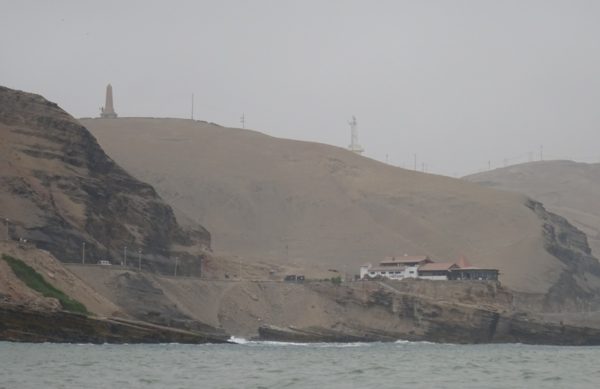
The storied restaurant El Salto de Fraile which overlooks the sea from Chorrillos. Above you can see the Unknown Solder monument and Christ of the Pacific in Morro Solar.
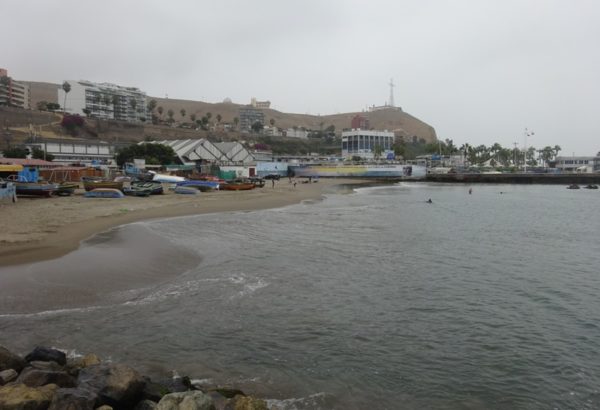
The fisherman park their boats on the beaches beside the wharf.
Check out this guy doing his thing in a water jet pack. You can rent one with a few days’ notice from Sky Flyboard Peru for 100 soles ($30), which includes wet-suit, life jacket, equipment training and a 15-minute adventure with a video on a memory card.
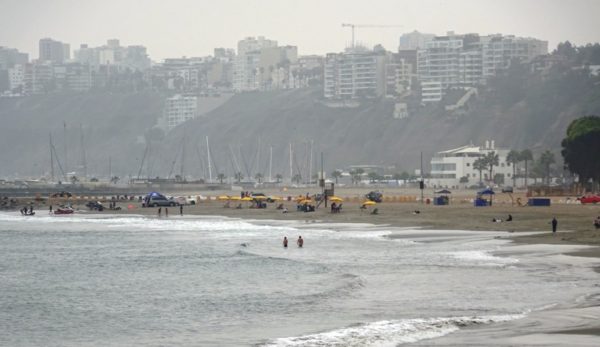
You see surfers out in the water in the winter because they wear wet-suits. But I was surprised to see a couple brave souls swimming on this cold winter day. This is Agua Dulce beach, north of the fisherman’s wharf. It can be unbelievably crowded in the summer.
Location and info
The Chorrillos fisherman’s wharf, known as “terminal pesquero” in Spanish, is located just south of the beach circuit which spans Miraflores, Barranco and Chorrillos.
Pictures
Click the images to enlarge. Or for high-res slideshow viewing, see the Chorrillos Fisherman’s Wharf album on the Lima City of Kings Facebook page.
